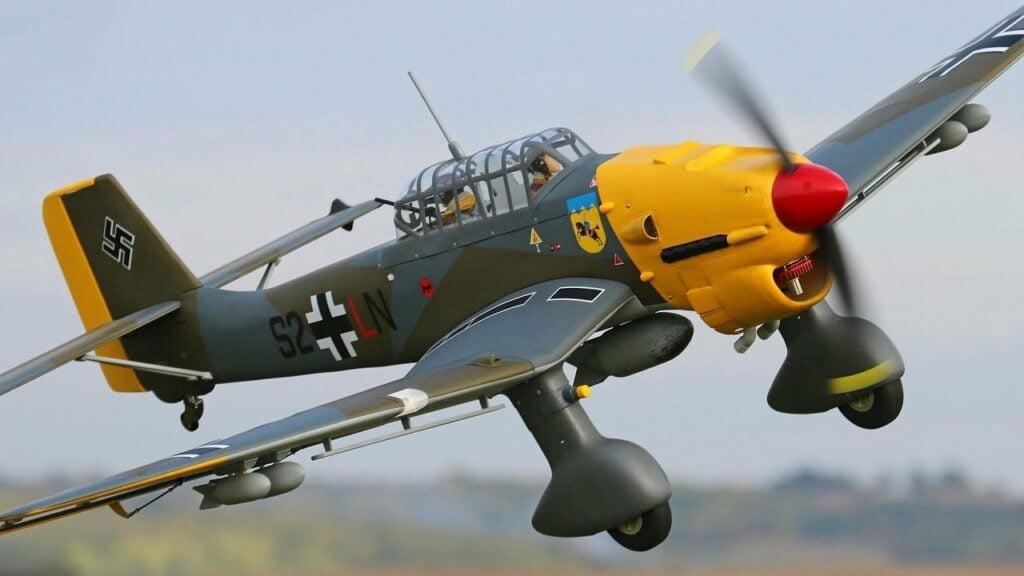Never before has a warplane so old, vulnerable, and technologically primitive wreaked such havoc on its adversaries as the Junkers Ju-87 Stuka. Even as Germany invaded Poland, sparking World War II, its Ministry of Aviation was problematic at developing a replacement Reichsluftfahrtment for its dive bomber, with the early Ju-87B intended to be the last model built. But do you know why did German Stuka Airplanes make a screaming sound?
The screaming sound made by German planes when diving was caused by small fans attached to the front of their landing gear that acted as a siren. It was intented to weaken enemy morale and increase the fear of dive-bombing.
The Dive Bombing Warlord; The Stuka
The Stuka’s fearsome reputation was also influenced by the fact that the plane is frequently envisioned, and commonly depicted in newsreels of the time, swooping down on Warsaw and the Low Countries, it’s Jericho Trompeten sirens wailing. During the Spanish Civil War, nine Ju-87s were used, but they were only used infrequently and conservatively.
Even Spanish Nationalist pilots were forbidden from approaching them because they were still considered secret weapons. The small Spanish market town of Guernica, the subject of Pablo Picasso’s famous antiwar painting, was bombed by Heinkel He-111s and Junkers Ju-52s, horizontal bombers that carpet-bombed without regard for civilians, exactly the kind of mission the Stuka was not designed to fly.
It’s challenging to be kind to any bomber, but the Ju-87 was designed to attack and destroy military targets, not civilians. Had Stukas been used to bomb the crucial bridge that was the raid’s primary target, the world would have long forgotten Guernica.
The Spanish war demonstrated that the Ju-87 could be a valuable weapon. When Bf-109Bs arrived, the Nationalist rebels quickly took control of the skies. Because Republican anti-aircraft artillery was primitive, the Stukas bombed at will, and even the worst drops typically landed within 100 feet of the target. Good hits were either on target or within 15 feet of it. (Source: National Interest)
What is the Purpose of Dive Bombing?
The only advantage of dive bombing is accuracy. Consider sprinting across a golf green while attempting to drop a ball into the cup from eye level. Consider standing directly above the cup and sighting from the ball to the cup before dropping it. The former is traditional horizontal bombing, and its precision depends on a bombsight that can calculate various parameters to create the correct parabola from bomb bay to target. The latter is dive bombing, and if the dive is truly vertical, the bomb will follow the bomber’s path to wherever the plane is pointing at a tank, a ship, a bunker, or a building.
The Stuka’s pinpoint accuracy made it a lethal anti-ship weapon. During the invasion of Norway, Stukas sank most of the Polish Navy, crippled two cruisers, destroyed several Allied destroyers and sloops, and harried vessels evacuating Allied troops at Dunkirk. (Source: National Interest)
Image from 19fortyfive.com
